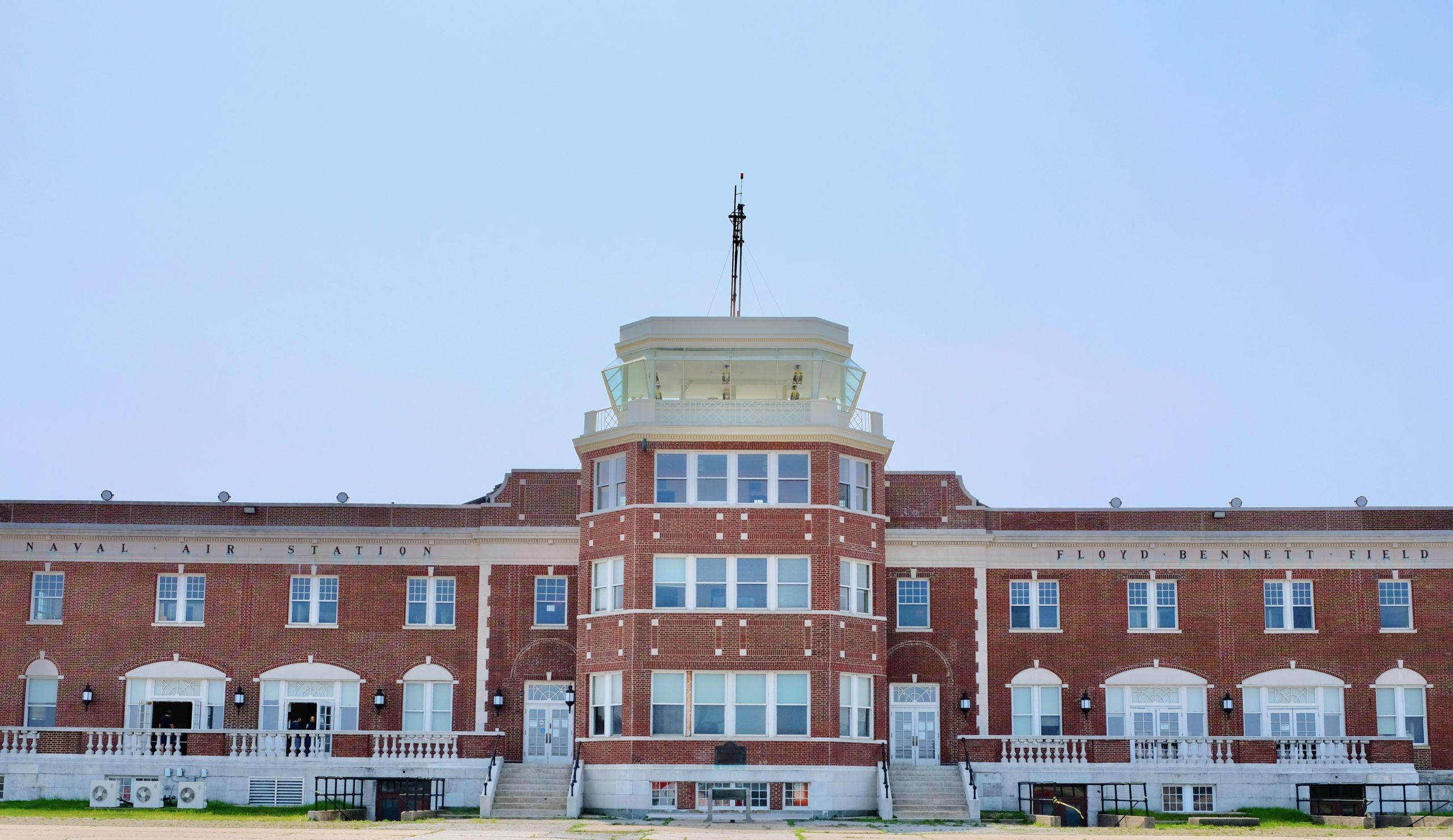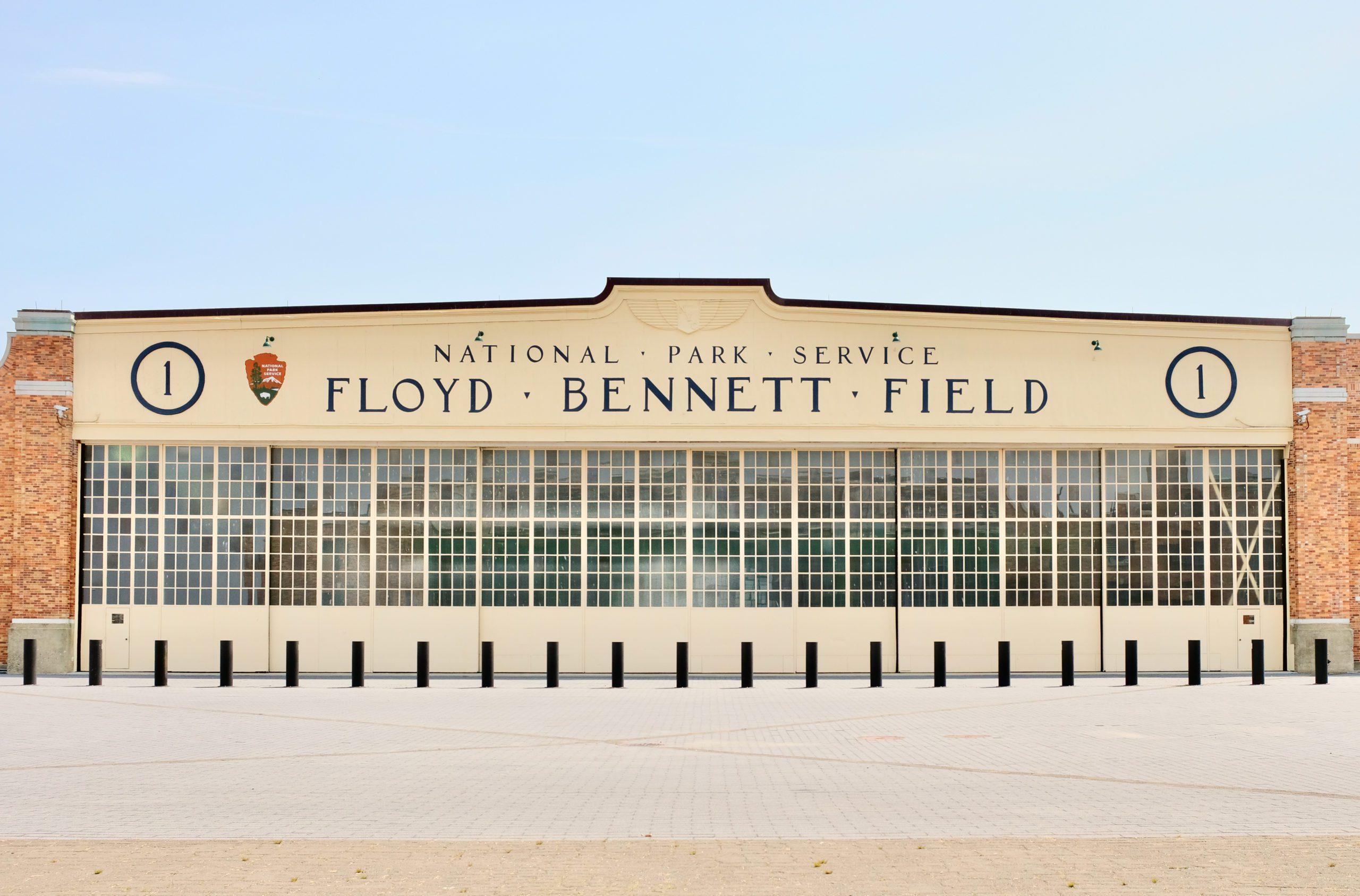Funen, Denmark
Egeskov Castle
This floating castle appears to be from an enchanted fable, but in actuality it is Europe's best preserved Renaissance water castle.

Photo Credit: Accidentally Wes Anderson

Photo Credit: Accidentally Wes Anderson

Photo Credit: Accidentally Wes Anderson

Photo Credit: Accidentally Wes Anderson
Presented in partnership with:
Floyd Bennett was once considered New York’s top aviator. He and Admiral Richard Byrd were especially recognized for their daring expedition to the North Pole. Though competitors doubted their success (as the aircraft was not in flight for long enough), Byrd and Bennett were lionized in the US, receiving Medals of Honor. In 1927, they set their sights on the coveted Orteig Prize, but Bennett was injured during a practice run. While recovering, he visualized an airport at Barren Island. Tragically, he never saw this dream realized, as he soon fell ill and died on a rescue mission to assist marooned aviators.
Months later, construction began at Floyd Bennett Field, New York City’s first municipal airport. Located in southeast Brooklyn, it was created by connecting Barren Island and surrounding islets by filling the channels with sand pumped from Jamaica Bay. It was built less in response to Bennett’s vision, and more because of the growth of global aviation. Other major US cities had established public hubs, while New York still relied on private airfields. By the late 1920s, the city’s competitive streak was ignited—particularly after Newark’s Municipal Airport launched; right around the same time as a remarkable flight was piloted out of Long Island. Officials decided that history should be made within city bounds.
Floyd Bennett Field’s two perpendicular runways officially opened in 1931. Its flashy terminal featured underground tunnels that allowed passengers to stroll to the runway, no matter the temperature. A barber shop, weather room, several lounges, and a restaurant completed the upmarket modern terminal. More impressive than its conveniences were the records set there throughout aviation’s “Golden Age” of wonder. Dozens of around-the-world and transatlantic flights started or ended on its runways, including those piloted by Charles Lindbergh, Amelia Earhart, and Howard Hughes—who used it as his base for completing a record round-the-world flight in under four days.
Its commercial tenure was brief, and WWII saw it reassigned for naval purposes. Ultimately, it integrated into the Gateway Recreation Area, and is now run by the National Park Service, but still retains airborne value as a site for the NYPD air squad and Brooklyn’s Emergency Services. Most of its runways are (aptly) barren and overgrown—though some are used to train bus drivers and Sanitation workers. While it remains a Historic Site, it is rarely visited, except when used for a flea market, by resourceful kids playing street hockey in abandoned hangars, or when an older gent decides to take a nostalgic bike ride across the storied runway.
The Long Island venture that encouraged the construction of Floyd Bennett Field was the winning flight for the Ortieg prize—$25,000 offered to the first aviator who completed a non-stop flight between New York and Paris. Early attempts had claimed or injured several lives. It was a prize dreamt of by hundreds; but completed by one.
Though he hated the nickname, Charles “Lucky Lindy” Lindbergh had plenty of good fortune to thank for his 1927 success. His training as an amateur stunt pilot, along with a constitution of grit, pluck, and courage came in handy. But luck’s sway cannot be understated, as on that fated day, there was a complete absence of wind over the Atlantic. His single-engine plane (made chiefly out of canvas) barely cleared the telephone wires upon takeoff, yet miraculously, stayed on course. The official Aeronautical Association observer noted it was the “first time such unusual weather conditions have been recorded.” These extraordinary circumstances enabled Lindbergh to successfully avigate (as air navigation was then called), by dead reckoning, a system that relies on the presumption of one’s location, calculated by speed, direction, and time. Lindbergh’s plane, the Spirit of St. Louis, had such simple mechanics that calculations would have been performed by hand, while he worked its foot pedals and held its flying yolk between his knees. The other inspiring technology that aided his victory was something aviators then referred to as “pilotage,” know in contemporary parlance as “looking out the window.”
The flight was not achieved with complete confidence. In fact, Lindbergh was so uncertain of his precise location that he buzzed the first fishing boat he saw, after miles and miles of open ocean. “Which way is Ireland?” He inquired.
Luck, acumen, ace pilotage, and the generous direction from a no-doubt-dumbfounded sailor managed to convey him across an ocean and into history. 33 hours after take-off, he was circling the Eiffel Tower in a victory lap before arriving at Paris’s Le Bourget airfield to a crowd 100,000 strong, in a state of such frenzied elation that Lindbergh feared he’d be torn to pieces.
After the epic feat, he nearly lost control of the Spirit of St. Louis (not to mention his life) while touring Latin America and the Caribbean. Shaken by his uncertainty regarding direction, he grew eager to find advanced equipment and navigational tools that were less reliant on the wind’s whims. Lucky Lindy began planning an around-the-world flight, scheduled to take off a few months later. To prepare, he went to observe air operations aboard the USS Langley, where he met the young and resourceful Lieutenant Commander Philip Van Horn Weems. Weems was happy to share his revolutionary gear and inventive trinkets with Lindbergh. Among them was his model aviator “hack” watch, which could be set precisely to the second, rather than the minute. Those seconds were essential for pilots who needed to be perfectly synced with radio broadcasts in order to navigate their location.
Weem’s “hack” watch was the inspiration that would eventually lead to the creation of Longines’ Lindbergh Hour Angle, which is practically an exact replica of the watch Lindbergh designed, so that he would always know precisely where he was.
To look upon an elegant Lindbergh Hour Angle watch and marvel at its intricate design is akin to peeking inside the cockpit of a plane. What in the world are all those dials and knobs and numbers and gauges??! There is no less wonder contained within this stunning timepiece. As Lindbergh learned, the Earth’s orbit around the sun is not perfectly circular, which means that not every day is the same length. And while your ‘80s Casio may have blown your mind by having a calculator, the Lindbergh Hour Angle watch is capable of perceiving and displaying each day’s slight time differentiation, which is crucial when it comes to navigation. Laypeople may not understand what that means or how to decipher it upon our wrist…but most of us can’t fly a plane, either.
Internationally venerated, literally armed with a handsome, wearable awareness of his latitude and longitude, the ambitious Lindbergh set about using his world-wide acclaim to develop air travel into a viable industry, writing, “America has found her wings, but she must yet learn to use them.” The next year he became the technical director for Transcontinental Air Transport (which would later become TWA). He planned its first route, helped determine the cities it would serve, designed the airports that would be graced by its planes, and personally approved every pilot. TAT was colloquially known as the “Lindy Line” to highlight the hero pilot’s central involvement (until his fall from grace). The first cross-country air trip was seen as the height of luxury and triumph, even though it was anything but non-stop—involving two overnight train rides and seven refueling stops, for a total of 48 hours of travel. So the next time you’re bemoaning your two-hour layover in Atlanta or Dallas, consider their promotional itinerary (which was heavily, conveniently abbreviated): “Ride all night on the Pennsy from New York City to Columbus, Ohio. Take the plane all day tomorrow to Waynoka, Oklahoma. Take the Atchison, Topeka & Santa Fe Railroad that night, and finally the plane at Clovis, New Mexico, to Glendale, California, near Los Angeles.”
Naturally, the airline industry grew and improved in every way, eventually achieving the height of jet-age cool by 1959, when Eero Saariaen designed the world’s most glamorous airline terminal, JFK’s swanked-out, three-floor TWA Flight Center—an icon of mid-century optimistic futurism.
 40.5910174, -73.8906091
40.5910174, -73.8906091
Need an account? Sign up
This site is protected by reCAPTCHA and the Google Privacy Policy and Terms of Service apply.